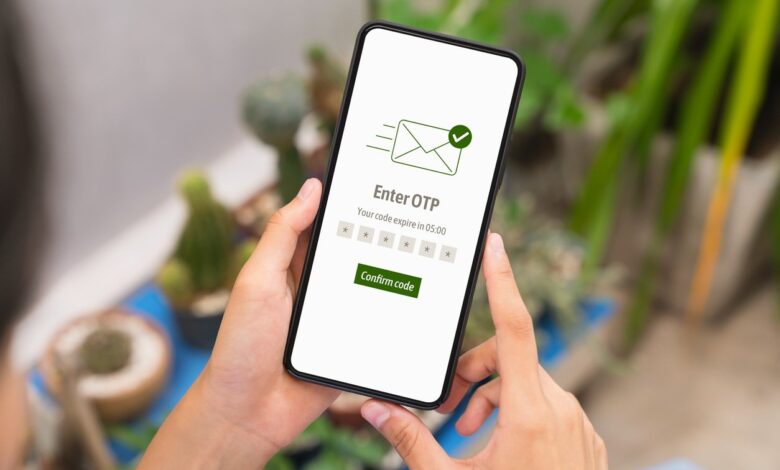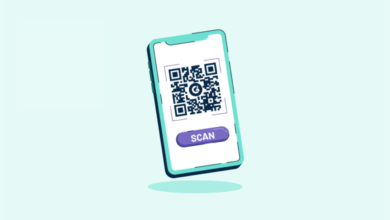Navigating Delivery Mishaps: A Guide to Overcoming Shipping Setbacks

When security meets convenience, the stakes are high. With cyber threats on the rise, one-time passwords (OTPs) play a critical role in preventing unauthorized access, but what happens when they don’t arrive on time — or at all?
The 2024 Verizon Data Breach Investigation Report highlighted that 31% of all breaches over the last decade involved stolen credentials. As a result, organizations and individuals are moving towards protocols such as multi-factor authentication (MFA) leveraging one-time passwords (OTPs).
However, OTP messages are often email or SMS-based, and both channels are prone to delivery failures. In this article, we’ll analyze the key reasons behind OTP failures and identify the best ways to improve delivery because OTPs are key to brand perception, reliability, and security.
What are OTP messages?
OTP messages are time-sensitive alphanumeric codes sent to customers to verify their identity. OTPs can be used across many instances, such as:
- Identity verification while making a payment
- Persona verification during a login to an app or website
- Identity verification while collecting a parcel or mail delivery
- Geolocation verification while consuming content or utilizing a ticket booking
OTPs can be sent via SMS, email, WhatsApp, or push notifications, and delivery success or failure rates vary by channel.
Source: MoEngage
OTP delivery failures: impact and reasons
Have you ever tried logging into an account only to be left waiting for an OTP that never arrives? Frustrating, right? OTP messages play a crucial role in keeping things secure and seamless. But when they fail to deliver, it’s more than just an inconvenience – it can disrupt business operations, frustrate users, and even lead to security risks.
Impacts of failed OTP deliveries
Before we jump into the reasons for delivery failure, let’s take a look at the consequences of OTP delivery failures.
Security lapses
If OTPs are undelivered, brands cannot verify customer identity. This creates a chain reaction, starting with customer experience. Customers will get frustrated and lose trust in your brand’s security system. They might try an alternative access management solution, request another OTP, or try to bypass your verification protocols, resulting in serious security breaches. Over time, your customers will stop using MFA or two-factor authentication (2FA) and resort to weak passwords that are gullible to phishing attacks.
Compliance issues
Government regulations in most countries require brands to deploy extensive privacy and security practices. Since OTPs are a core aspect of multi-factor authentication, failure to deliver OTPs might compromise sensitive customer data and put your brand at risk of failing mandatory regulations.
Poor customer experience
Imagine that an important shipment is arriving at the customer’s doorstep, but the OTP for them to receive it has failed. Or worse, imagine a customer trying an urgent payment or login session, but the OTP for verifying that has failed.
OTPs are used for critical customer use cases, and failure to deliver these causes immense frustration and breaks the flow of their journey. Over time, customers will abandon the purchase or transaction and churn from your brand.
Now that we’ve understood the negative impacts of the failure of OTP deliveries, let’s analyze the reasons for failure.
Reasons for OTP delivery failure
Source: MoEngage
While most OTP deliveries are channel-dependent, other reasons for delivery failures include:
- Network issues: Network issues such as poor signal strength on the recipient’s phone and network congestion on the carrier’s end can result in failed OTP delivery.
- Carrier restrictions: During times of peak load, SMS and channel carriers might prioritize other messages at random, causing failures in OTP delivery.
- Server issues: Server issues such as downtime, server overload, maintenance activities at the server’s end, and DNS record mismatches can hinder OTP delivery.
- Sending limits: No matter the channel, a certain limit is set for code deliveries to prevent abuse. When these limits are breached, the delivery of an SMS OTP or email OTP gets disrupted.
- Sender reputation: If your sender reputation is low due to problematic email or SMS sending practices, your OTP deliveries take a hit.
- Spam filters: If your email or SMS OTP services trigger spam filters, your messages will land in the spam folder instead of the customer’s inbox, and your customers will never read them.
Regardless of the many reasons for OTP delivery failure, brands can adopt strong practices to ensure better delivery. Let’s dive into a few of them.
How to ensure reliable OTP delivery
While certain channels may be more prone to OTP delivery failures than others, there are a few measures you can take to prevent such incidents.
A channel fallback mechanism
It’s never a good idea to put all your eggs in one basket, especially for something as critical as transactional messaging or OTP delivery. If one channel fails to deliver your OTP, your infrastructure should be set up in a way that automatically falls back to the next available channel.
Source: MoEngage
Here’s how having a multichannel fallback mechanism will help:
Reliable delivery
By setting up your system to have multiple fallback options, you can ensure that your customers receive OTPs irrespective of channel-dependent failures. This reliability is critical for time-sensitive transactional messages and ensures that customers are always happy with their experience.
Low error rates
Channel fallback processes should also be automated, requiring minimal human intervention. That way, failures on one channel don’t disrupt any flow, and an existing alternative can be used. This reduces the need for manual intervention, which further reduces the chance of OTP delivery errors.
Cost-efficiency
The cost of sending messages across each channel varies based on geography and usage. For example, email notifications cost less than SMS messages, and push notifications are entirely free of cost. To optimize your budgets, you should split your OTP delivery between channels based on their criticality and time-sensitive nature.
For instance, you can choose to send delivery OTPs through push notifications, banking OTPs via SMS, and transaction confirmation OTPs via email.
Enhanced customer experience through freedom of choice
By having a multi-channel delivery infrastructure, you can offer customers the flexibility to select their preferred method of receiving OTPs based on the situation and urgency. This personalized approach improves customer satisfaction and allows them to opt for the most convenient channel at any given time.
Vendor fallback strategy
Utilizing multiple vendors for each communication channel is crucial for ensuring reliable OTP notifications. While it may seem complex, diversifying vendors minimizes the risk of service disruptions and enhances delivery efficiency.
Source: MoEngage
Here’s how a vendor fallback mechanism can be beneficial:
Effective downtime management
Even with reliable vendors, system downtime is unavoidable. Relying on a single vendor for critical OTPs can lead to service failures and customer inconvenience. Implementing multiple vendors ensures continuity of service even during downtime.
Optimized load distribution
By distributing OTP requests among different vendors, you can balance the workload and prevent overload on a single vendor. This approach allows for efficient delivery management and ensures seamless service provision, even during peak periods.
Limit mitigation
Having multiple vendors available prevents dependence on server-side limitations and helps avoid breaching capacity limits. This proactive approach safeguards against service disruptions and maintains a consistent delivery performance.
Monitoring and Ensuring Reliable OTP Delivery
Monitoring and analytics play a vital role in ensuring the successful delivery of OTPs. Implementing tracking mechanisms for delivery status updates is essential to maintain a reliable communication system.
Source: MoEngage
Key metrics to monitor for reliable OTP delivery include:
- Send time: Measure the time taken for customers to receive OTPs after requesting them to optimize delivery speed.
- Delivery rate: Track the ratio of delivered OTPs to requested OTPs to assess delivery efficiency.
- Verification rate: Monitor the success rate of OTP verifications to detect potential security breaches.
- Failure rate: Analyze the ratio of failed OTP requests to total requests to identify delivery issues.
Best Practices for Reliable OTP Delivery
While occasional OTP failures are inevitable, implementing effective strategies can minimize disruptions and enhance delivery reliability. Here are some best practices to ensure successful OTP delivery:
Swift send time
OTP delivery should be instantaneous, with customers receiving codes within seconds of requesting them. Optimize your infrastructure to ensure prompt and efficient delivery, especially during peak periods.
Regular testing and optimization
Conduct thorough testing of delivery systems, including unit testing, integration testing, and acceptance testing, to identify and address any issues. Continuous optimization of infrastructure is essential for reliable OTP delivery.
Proactive maintenance and security measures
Stay updated with vendor releases and implement regular patches and updates to maintain a secure and reliable delivery system. Proactive system maintenance is crucial for preventing service disruptions.
Monitoring and reporting
Collect and analyze audit logs and failure reports to ensure compliance and troubleshoot delivery issues effectively. These reports provide valuable insights for optimizing OTP delivery processes.
Message formatting
Emphasize the OTP code in all communications and ensure clear and concise content for easy readability. Include relevant information to provide context for the OTP, enhancing customer understanding and trust.
- Highlight the OTP code as the primary focus in all communication channels.
- Provide additional context for the OTP, such as transaction details, to enhance clarity and transparency.
Enhancing OTP Security for Customer Protection
When it comes to protecting your customers from potential hackers, ensuring the security of their OTPs is crucial. Here are some key points to consider:
– Avoid making it easy for hackers to scam your customers by providing clear information that distinguishes the OTP code from other content.
– Improve the readability of long OTPs by breaking them into multiple visual blocks for easier understanding.
– Clearly state the time sensitivity of the OTP and its validity period in the message.
– Include a link or helpline number for customers to quickly reach out for support in case of OTPs generated for fraudulent transactions.
– Keep the content clean and easy to understand for smartphones to detect and fetch OTP data easily.
Designing OTPs for Better Delivery
While SMS OTPs may not require design, email, WhatsApp, and push notification OTPs heavily rely on it. Follow these design principles for a seamless user experience:
– Focus the design on the OTP code without overpowering it with excessive graphics or colors.
– Reflect your brand’s visual tone and language in the message design.
Ensuring OTP Security and Customer Privacy
While OTPs provide an extra layer of security, there’s a risk of OTP leakage if not properly secured. Here are some ways to enhance privacy and security:
– Use complex tokens with a combination of numbers, alphabets, and special characters.
– Set shorter expiration times for OTPs to prevent social engineering attacks.
– Limit the number of OTP input attempts and requests from a single source.
– Ensure encrypted delivery of OTPs through all channels.
– Secure the SMS authentication server that verifies the OTP code and maps it to customer identity.
FAQs:
1. How can I protect my customers from OTP scams?
– By providing clear and secure OTP messaging that distinguishes the code from other content.
2. What design principles should I follow for OTP delivery?
– Focus on the OTP code and reflect your brand’s visual tone in the message design.
3. How can I enhance OTP security and privacy?
– Use complex tokens, set shorter expiration times, limit input attempts, and ensure encrypted delivery.
4. Why is OTP security crucial for customer protection?
– OTPs are critical for securing high-stakes transactions and customer data, making security a top priority.
5. What steps can I take to ensure a reliable OTP delivery system?
– Focus on system security, fallback mechanisms, failure reports, send time, and content formatting for successful OTP deliveries.
By prioritizing OTP security and following best practices, you can protect your customers and enhance their overall experience.
Source: MoEngage The message.




